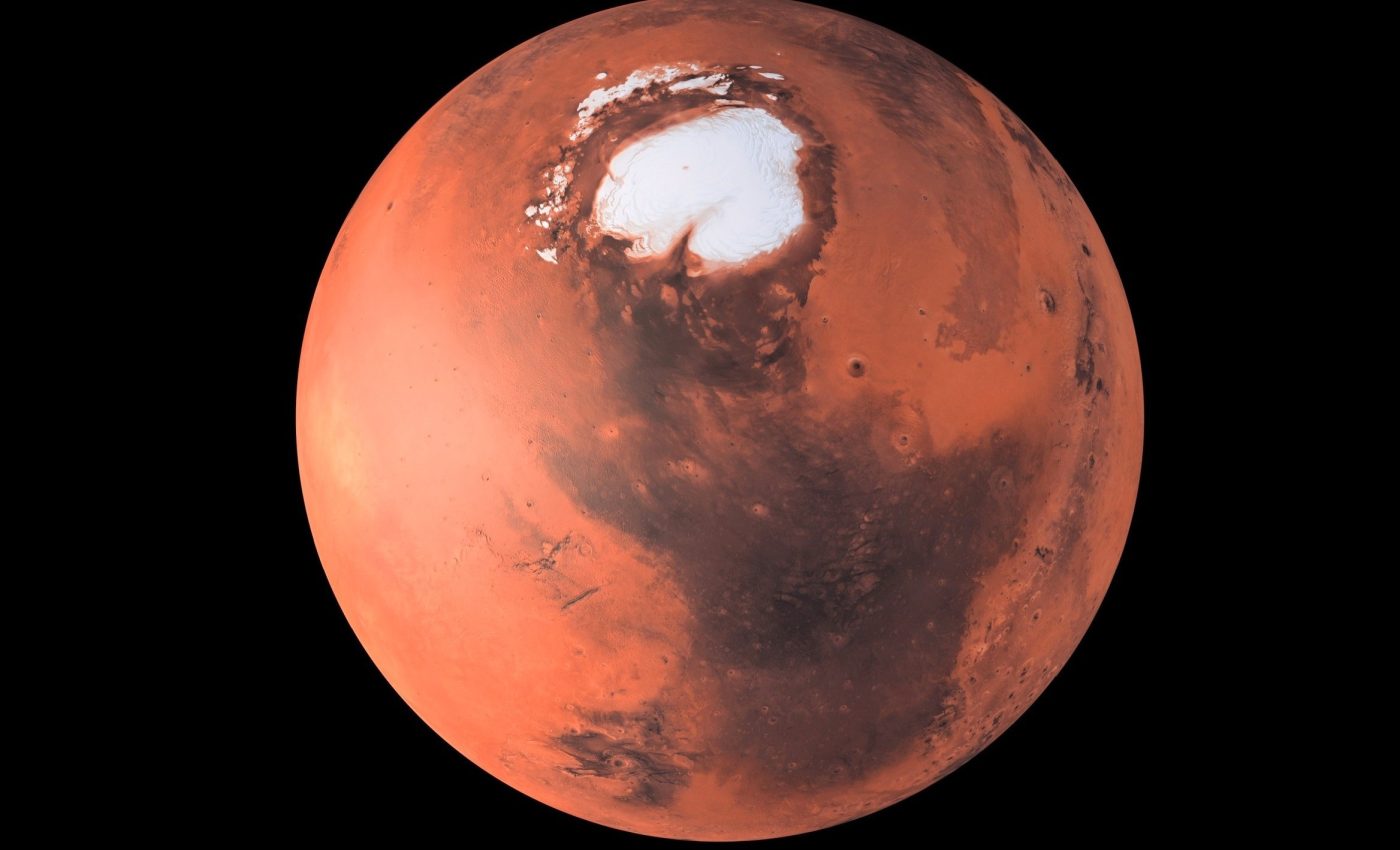
Ancient rivers suggest Mars once had a vast northern ocean
Billions of years ago, Mars wasn’t the bone-dry world we see today. It had rivers – most scientists now agree on that. The open question has been whether those rivers drained into a true ocean.
New work led by the University of Arkansas makes a strong case that they did, using a telltale river signature that’s visible from orbit across the planet’s northern lowlands.
“We don’t know of any life anywhere that doesn’t need liquid water,” said Cory Hughes, lead author of the study. “If Mars once had not just rivers but an ocean to receive them, the odds improve that it was at least briefly habitable.”
Earth’s blueprint for ancient Mars
On Earth, an unconstrained river snakes across its floodplain, eroding one bank while laying down sand on the other. Over years to centuries, the ribbon of water meanders back and forth across what geologists call the channel belt – the swath that captures the river’s lateral wanderings.
As a river approaches a large, still body of water – like an ocean – its flow slows. Slower water can carry less sand and silt, so the sediment drops out and builds a delta.
With less power to chew at its banks, the river’s side-to-side motion shrinks. The channel belt narrows over a long reach upstream of the coast known as the backwater zone.
That zone can be surprisingly long. On the Mississippi, the ocean’s “braking” effect reaches nearly to Baton Rouge – about 230 miles from the Gulf.
Rivers on Mars reveal familiar shapes
Hughes and his colleagues looked for the same pattern on Mars: mature deltas with long upstream reaches where the ancient channel belts tightened. Using high-resolution orbital imagery, they found multiple systems that fit the bill.
“This is a large-scale process,” Hughes said. “It leaves a footprint big enough to see from space.”
The simplest explanation: sizable Martian rivers were flowing into something vast and relatively still – an ocean (or at least a large sea) that once filled the planet’s northern hemisphere.
Fossil rivers written in stone
How do you reconstruct a river that dried up billions of years ago? You look for inverted channel belts – ridges that used to be river bottoms.
Here’s the trick. Rivers tend to lay their coarsest, most erosion-resistant sands on the channel floor. If that sand later turns to hard sandstone and the surrounding, finer sediments weather away faster, yesterday’s channel floor can end up as today’s ridge: a topographic inversion of the original landscape.
Earth’s tectonics often help by tilting and exposing ancient river systems; wind and rain do the rest.
Mars has no plate tectonics, but its relentless erosion can still strip away the softer material around a cemented channel body, leaving a raised “fossil river” behind. From orbit, these inverted ridges sketch out where water once flowed.
A Martian mystery found in Arkansas
Shortly after Hughes arrived in Arkansas to study Martian rivers with geomorphologist John Shaw, the science looped back to Earth. Shaw brought him to the Wedington Sandstone, an outcrop in northwest Arkansas.
The cliffs turned out to be part of a branching network of inverted ridges – remnants of a 300-million-year-old river that ran from what’s now Indiana to a shallow sea over central Arkansas.
Topographic inversion has been known for decades, but the Wedington outcrops reveal something rare: the only documented inverted river delta on Earth.
“I came here to study this on Mars without realizing the best analog was in the backyard -pure serendipity,” Hughes said.
Strong case for an ocean on Mars
The team’s findings strengthen the case that Mars’ rivers once drained into a standing body of water large enough to impose a long backwater influence – just as oceans do on Earth.
The deltas they mapped look mature, which implies sustained flow and stable base level, not just brief lake episodes. This finding expands the window and the real estate for potential habitability on ancient Mars: more water, for longer, over a larger area.
The discovery also gives scientists a new, quantitative yardstick – the length of the backwater zone – to test the ocean hypothesis at other Martian sites.
There’s still plenty to learn. Scientists want to know how widespread these backwater-style deltas are and how their dimensions compare to Earth’s. They also hope to uncover what those details reveal about the volume and duration of ancient Martian flows.
But the core message is simple and compelling. Mars’s rivers didn’t just wander aimlessly; they behaved like rivers that knew an ocean was coming.
The study is published in the journal Geophysical Research Letters.
—–
Like what you read? Subscribe to our newsletter for engaging articles, exclusive content, and the latest updates.
Check us out on EarthSnap, a free app brought to you by Eric Ralls and Earth.com.
—–













